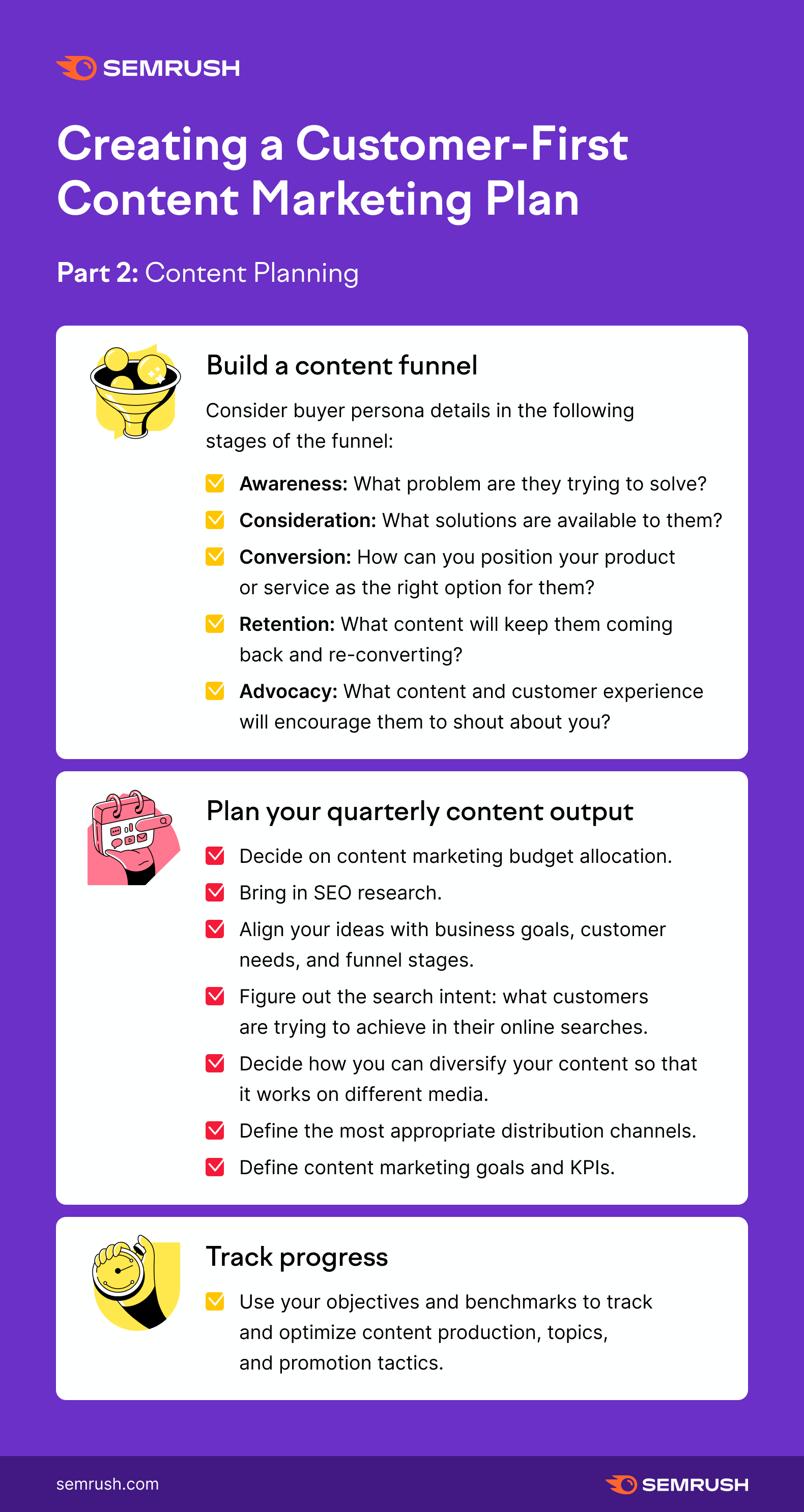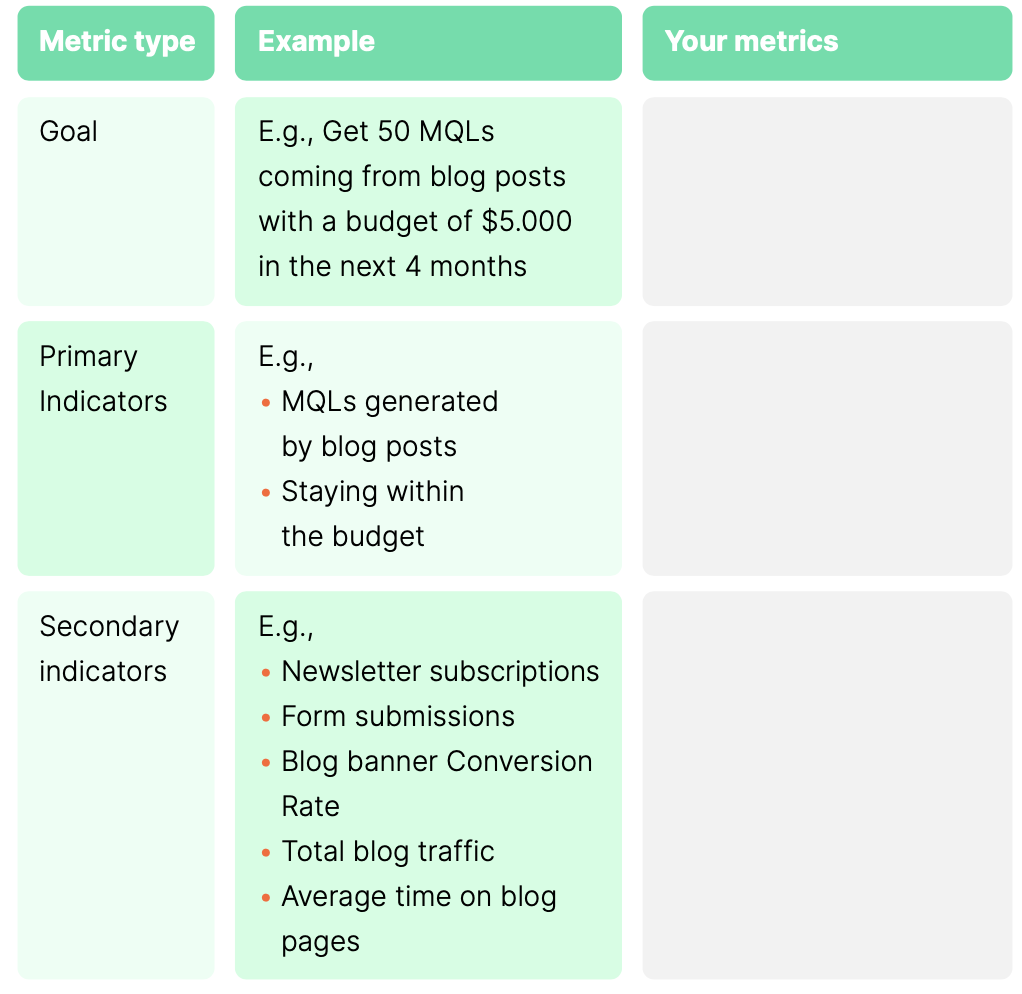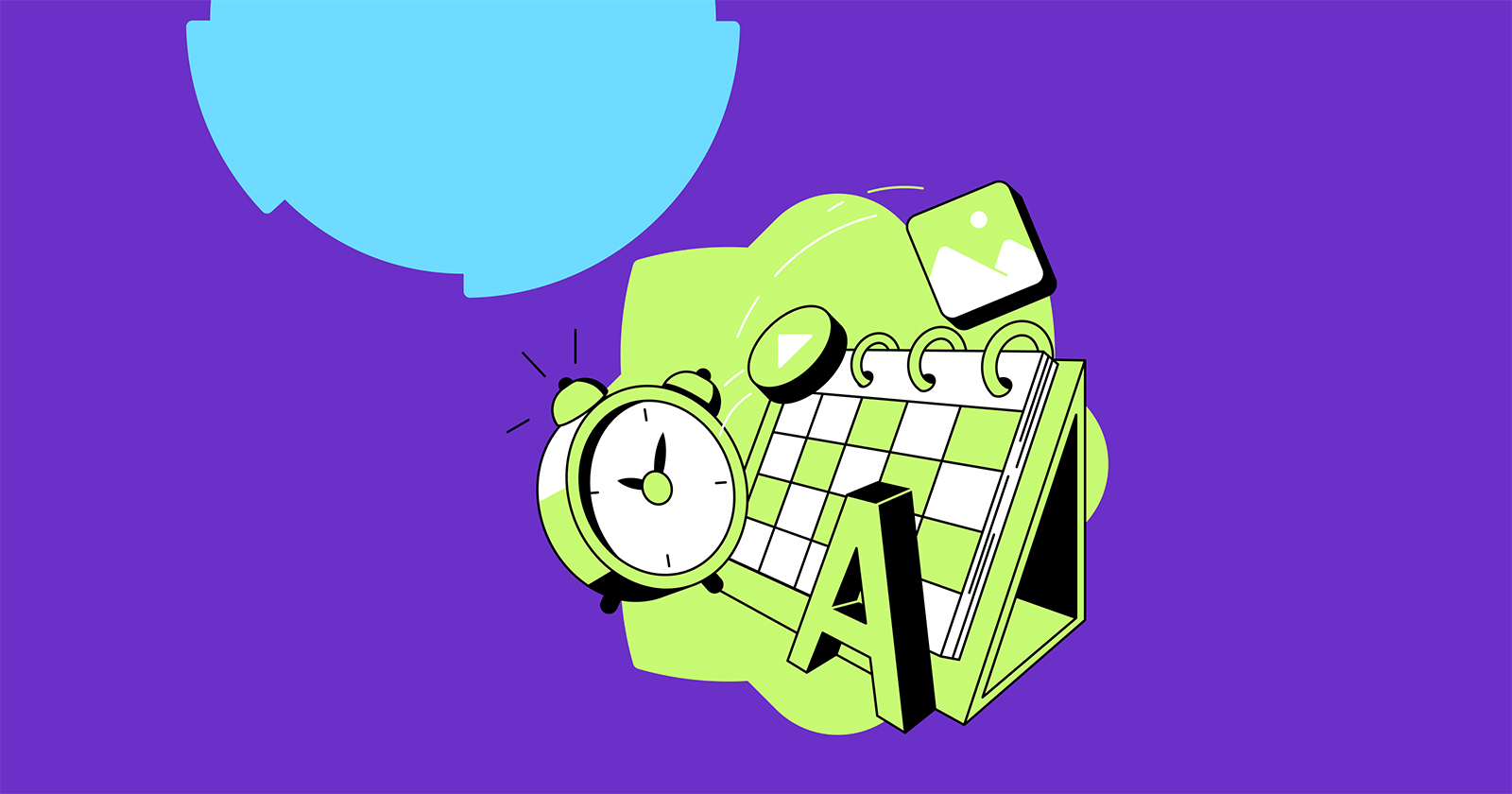Get Qualitative & Quantitative Data
Surveys can help you uncover a range of useful data on your current and target customers. They can include anything you want to know, from usage habits, location, and demographics, to personal or professional goals.
You can also find other unexpected or hidden information that might be pertinent to your content marketing efforts.
If you have an engaged audience, you can carry out focus groups and interviews for more personal takes. The qualitative information that this generates helps your marketing and customer services team form a more human concept of your target audience.
Segment Your Audience
Next, collate and analyze feedback. Not only will this inform your brand voice and tone, but will also give you ideas for content topics, when it comes to planning.
In your research, be sure to uncover your target audience’s pain points and challenges. These will assist you in ideation and developing content that genuinely resonates with the people you need to connect with.
Finally, define your audience segmentation. You are likely to have more than one type of customer or one type of audience. You might split these by location, goals, budgets, challenges, or even how or why they use your product or service.
When you put your audience in groups, you will be able to personalize your communication and make more of an impact.
3. Develop Reader & Buyer Personas
Now that you have a good understanding of who your target customers are and how you can segment them, you should create a range of buyer personas. These are written profiles that represent who ideally purchases your product or service.
In content marketing, we also sometimes call these buyer personas “reader personas”. Reader personas are a little broader than your buyer personas, because you might also want to target people who become brand advocates and share your content with their networks.
Consider these personas to be your targets for all content and marketing collateral going forward. They consolidate the information you have collated. What’s more, they help teams across your business visualize and understand their customers.
Write a Content Marketing Statement for Your Buyer Personas
Once you have identified your personas, your team can develop a content marketing statement that answers the following questions:
- Who are you trying to help?
- How do you plan on doing that?
- Why do you want to provide value to them?
4. Create a Customer Journey Map
A customer journey map allows you to understand how your customers want to interact with you and helps you deliver the right content at the right time.
The map uncovers the path your customers follow from first discovering a problem, to searching for solutions, to finally purchasing your offering.
Your whole business and all your teams can benefit from a firm understanding of this journey. It’s an especially valuable tool for your content marketing team, and it will help you develop a strategic plan.

5. Build a Content Funnel
To develop a clear customer journey map, you need to consider your reader or buyer persona needs at each stage of the content marketing funnel.
Awareness: Discovering a Problem
At this stage in the funnel, your audience has discovered it has a challenge or problem. Your buyer personas may approach this problem differently.
For example, they may search on Google, look in social media groups, or ask friends for advice on what solutions are open to them.
As a result, they’re likely to find a range of different solutions – some of which might resemble your company’s offerings, others might be completely different.
To give an analogy, a person looking for entertainment might ask friends what they should do on Friday evening. There are a number of things they could do: go to a restaurant, visit the cinema, go to a concert. While each activity is very different, they each provide a viable solution to the same problem: boredom.
Content Mapping Question: How does each buyer persona discover they have a problem to solve and what do they do next?
Consideration: Comparing Solutions that are Available to Them
Once your buyer persona has discovered a range of solutions, they will start to do their research and narrow them down. Each buyer persona is likely to have their own criteria for doing so, and common ones include:
- Price
- Ease of use
- Location
- Reputation
- Recommendations or reviews
- Comprehensiveness (how well does it do a particular job)
- Quality of product or customer support
- Previous interactions with the brand
Content Mapping Question: What criteria are most important to each buyer persona?
Conversion: Positioning Your Product or Service as the Right Option
Your job, at this stage in the funnel and buyer’s journey, is to show them the benefits and features of your offering. Once you know which criteria are more important to your buyer personas, you can more easily create content and copy that positions your brand as the best solution.
Content Mapping Question: How can you show your product or service best serves your buyer persona needs?
Retention: Defining the Content that Will Keep Them Coming Back & Re-Converting
Once your leads have become clients, it’s beneficial to have them come back again and again. Your cost per acquisition will fall, and increase your margins as a result. So how can you stay in contact with your clients?
Get feedback and develop content to keep your brand top of mind.
Content Mapping Question: Why did your clients convert in the first place and how was the experience for them?
Advocacy: Creating the Conditions that Encourage Them to Shout about You
Identifying and engaging with future brand advocates is key if you really want to make the most of word-of-mouth marketing. Define what your clients want in terms of customer service.
Once you know that you are delivering on their expectations consistently, you can create shareable content, referral deals, or discounts for recommending a friend.
Content Mapping Question: What value can you continue to offer your clients post-purchase? What would make this content shareable?
Tip: ImpactHero maps your content to customer journey stages, automatically providing actionable insights and recommendations. Use them to improve content performance and for choosing a suitable content format for each stage or goal.
Download the Ultimate Guide to Creating a High-Performing Content Funnel
6. Plan Your Quarterly Output
Aligning your content ideas with business goals and customer needs at each step in the funnel will keep your output focused and effective. So, with a budget in mind, it’s time to start planning your content, mapping it to the buyer’s journey you outlined in the previous step.
When ideating themes for your buyer personas, use keyword research to determine how important topics are.
Higher volume long-tail search terms indicate that a content idea is particularly strong. You can also uncover additional questions and topic areas your buyer personas are interested in.
Once you’ve compiled a list of target keywords, you’ll also need to figure out the search intent – that is what customers are trying to achieve in their online searches. You can look at competing articles on Semrush and do a Google search using the keywords to see what types of articles are returned.
What you see will show you what Google thinks best satisfies the user’s needs. So if you see more lists, guides, thought leadership articles, how-tos, videos, or infographics in the search results, that’s probably the kind of content you also need to create.
Tip: The Semrush Topic Research tool helps you find the list of related subtopics and ideas based on a keyword. Use it to generate ideas for new articles, headlines, and topics to write about.
Building a Content Calendar
Next, fashion your topics and title ideas into a content calendar. This will help you batch content ahead of time and publish it at regular intervals.
When writing a content calendar, consider using topic clusters – that is a body of interlinking content that offers a deep and complete treatment of the theme you are covering. This helps to show Google and other search engines that you are an expert in the subject area. It also means your website visitors will find more value in your content.
A simple content calendar template looks like this:
| Target persona | Topic area | Funnel Stage | Keywords | Publish date |
Depending on your processes, you may also wish to include other fields in the calendar:
- Responsible team
- Writing/editing deadlines
- Distribution channels
- Other supporting collateral to create
- Hashtags
- Promotional copy
- Calls to action
- KPI/metrics
Diversify Your Content
It’s important to squeeze as much out of your high-performing content as you can. If you have a blog or a guide that’s doing particularly well, it’s ripe for diversification. That is, you can transform it into other types of content and reach the widest group of people possible.
Decide how you can diversify your content so that it works on different media. For example, a written guide can become a:
- YouTube video
- Webinar
- Short infographic
- Series of social media posts
- Live AMA (ask me anything) on Instagram
At the same time, you should define the most appropriate distribution channels. Considering your audience and the places they are most likely to hang out online is key. This will help you find where your content will do best.
At the beginning of any content campaign, test sharing and sponsoring content on different platforms. Once you start seeing results and setting benchmarks, make sure to focus on where you are getting the most bang for your buck.
7. Track Progress
You can’t run an effective campaign without setting your content marketing KPIs. Use your overarching objectives to set specific metrics to track and optimize content production, themes, and distribution channels.
You can do this in a number of ways, some of which go beyond the direct impact on sales.
This means you’ll have to think about a range of metrics to follow. See the table below for examples from the Content Mapping Template:

Finally, remember to run regular content audits to avoid losing ranking and traffic, and to make sure your content is up to date.
Conclusion
Mapping out your content in this way is the most effective way of developing goal-driven content for your buyer personas.
Start with downloading the free Content Mapping Template Kit from Semrush, which includes the following items:
- Buyer Persona Template
- Customer Journey’s Template
- Content Funnel Template
- Content Calendar Template
- Content Marketing Metrics Matrix
